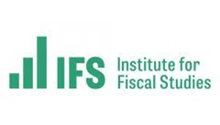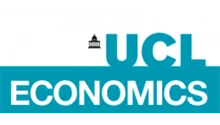Swati Dhingra of the Bank of England’s Monetary Policy Committee argues that UK inflation is more similar to Europe than it seems, and therefore rate cuts are possible without threatening the return of inflation to target.
Is UK inflation out of step with other economies? Many argue that it is, which means a more cautious approach to cutting interest rates may be needed. With prices for services and food rising more quickly in the UK than in the major Euro Area countries, our higher inflation feels like a particularly British problem.
Many attribute this to the UK’s strong nominal wage growth, but on closer inspection, this isn’t convincing. Instead, the effects of the shocks driving the UK’s current high inflation relative to Europe should fade, and thus, we need not be overly cautious about cutting interest rates.
Annual services inflation is currently running at 4.5 per cent in the UK, above the 3.4 per cent equivalent in the Euro Area. But as I have outlined before, the gap between the two continues to be driven by administered or indexed prices, like water bills and bus fares, rather than prices that are set competitively.
Figure 1. Administered prices of inflation in the UK is running much higher than in the Euro Area
Source: Eurostat, ONS and Bank calculations. Latest data: October 2025.
Note. Administered and indexed prices include services such as sewerage, dental, vehicle excise duty, tram, underground and bus transport, communications, TV licence fees, social rents, and education, which comprise around one-quarter of the UK services basket. Euro Area inflation statistics do not separate out private and social rents in HICP. We typically consider social rents to be administered, so include both private and social rents with administered prices for both the UK and Euro Area. Including rents within market-based services does not materially alter the story.
Historically these two categories have moved together. But currently, the rate of administered or indexed services inflation (combined with private rent) in the UK is running at well over twice the equivalent rate in the Euro Area (Figure 1). By contrast, prices in “market-based” services such as leisure and hospitality are growing at similar rates in both economies. Price pressures in administered or indexed services do not clearly reflect the balance between supply and demand, and using monetary policy to counter their rise isn’t appropriate.
Figure 2. UK administered prices inflation is also running at a higher rate than market-based services – pulling overall inflation up
Source: ONS and Bank calculations. Latest data: October 2025.
Note. ‘Total’ here refers to Headline CPI – as is the case in Figure 3.
Another often named culprit for accelerating inflation is food prices, which have been rising across much of the world, but at a faster pace in the UK than in the Euro Area (Figure 3). But it’s not clear that this gap reflects anything other than global trends and slightly different supply chains and shopping baskets in the two economies.
Figure 3. UK food inflation has recently picked back up – but the difference with the Euro Area is explainable
Source: LSEG Datastream, Eurostat, ONS and Bank calculations. Latest data: October 2025.
Over three-quarters of the UK–Euro Area food inflation gap can be explained by just ten products (Figure 4). Whilst it’s true that the rate of inflation for these ten products is a touch higher in the UK than it has been in the Euro Area (rate effect) – directly increasing UK inflation – it’s also true that the weights which most of these products are assigned in the UK are also higher than the equivalent weight in the calculation of Euro Area food inflation (weight effect).
Take chocolate for example. Chocolate prices currently account for around a fifth of both UK food price inflation and of the corresponding gap between the UK and Euro Area. Global cocoa prices surged to multi-decade highs at the end of 2024 as heavy rain, drought and plant diseases disrupted harvests in West Africa. Prices have increased in the UK and the Euro Area to a similar degree, but have been felt more sharply in the UK because chocolate forms a larger share of British shopping baskets. Differences in consumption habits and the timing of pass-through to inflation have been at play across other food products including olive oil as well.
These are still relatively isolated cases. For the most part, food items are contributing to inflation in the UK and Euro Area to a similar extent. In Ireland, where consumption, production and global exposure patterns most closely resemble the UK, food inflation is running at a similar rate (4.5 per cent in Ireland, and 4.9 per cent in the UK, in September). And on initial analysis, it appears that the slight widening in the gap between UK and Euro Area food price inflation in October was an outlier and can be mostly put down to base effects in fresh or chilled vegetables*.
Figure 4. Over three-quarters of the UK–Euro Area food inflation gap can be explained by just ten products
Source: LSEG Datastream, Eurostat, ONS and Bank calculations. Latest data: October 2025.
Note. *Excluding potatoes/tubers. **And other cereal products.
Wages are also playing a smaller role than first appears in the UK’s inflation story, despite making up a big chunk of the costs in services. While wage and services price growth appear linked at a headline level, a more granular look shows no real correlation.
Wages in the UK accelerated faster than the Euro Area during the pandemic, but since 2024 earnings have been growing at similar rates so can’t explain the recent inflation gap. Wages also aren’t behind the rise in administered and indexed services. Rising wage bills accounted for two thirds of price growth in market-based services over the past year, compared with only one third in administered services.
The Bank of England is facing a sharp trade-off dealing with administered prices, economic activity, and quickly bringing inflation to target. Policymakers can’t achieve all three fast — the choice is which margin will bear more of the adjustment.
For example, accepting the price growth of administered prices with a 2 per cent inflation target means bringing inflation down through services such as hospitality and leisure and goods. Achieving this quickly could mean these sectors need to make big sacrifices such as implementing real wage cuts to keep their costs in check. If all other input costs in these sectors stayed flat and goods inflation, including food, stabilised at 1 per cent, wage bills and margins in market-based services could only grow by 1 per cent — leading to real wage cuts — to rapidly bring overall inflation back to our 2 per cent target.
The ‘gap’ in inflation between the UK and our continental neighbours can be largely explained by administered or indexed prices and global commodity shocks. These should pass. With the path that I expect inflation to now follow, the current policy stance is – in my view – overly restrictive. We can afford to reduce interest rates back to a more neutral level and not put additional strain on economic growth.
That said, given the state of the global environment, it is not hard to imagine shocks emerging that could derail that path and disrupt the steady progress on underlying disinflation. But acting pre-emptively, holding interest rates higher without prior knowledge of what those shocks might be, is not needed to sustainably achieve the inflation target.
Where can I find out more?
- The Bank of England’s latest Monetary Policy Report (November 2025)
- The House of Common’s international inflation comparisons
- How long will UK inflation stay above target? - Economics Observatory









































